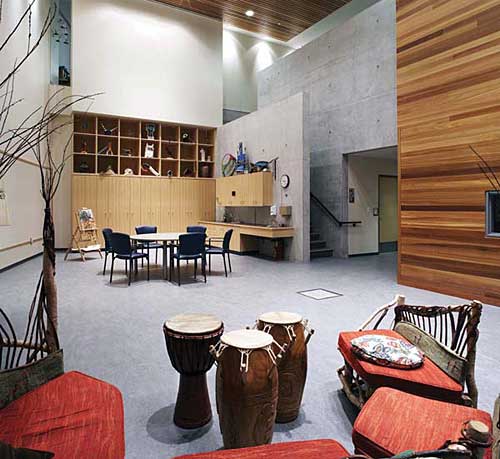Standing on Green Principles: Sustainable Flooring Choices and Life Cycle Assessment
|
ÂÂ
Linoleum and tile: The manufacture of composite materials should be analyzed methodically for any LCA strategy, in part because any product's constituent materials may need to be analyzed separately. One can rely on the flooring manufacturer's LCA, if it is available, but it is helpful to ensure that the needed information is complete. For example, patent issues and competitive vendors might mean that project teams need to inquire for LCA information.
On the other hand, sustainable manufacturers often become their own harshest critics, conducting and seeking thorough, independent assessments of their products. "Sustainable practice is ultimately going to be very profitable. So why do somemanufacturers sell the public short, offering only a pretty brochure with sound bites?" asks Forbo Flooring Systems' Cole. "People are hungry for an education in sustainability right now, so give them an LCA with meaningful data they can really use."
ÂÂ
|
ÂÂ
Cork: Most of Portugal's cork harvest is manufactured into finished product within the geographically small country's borders. One could, therefore, begin the manufacturing stage of an LCA by noting the energy saved in this step. Since the resource did not travel far, less energy was expended (and less CO2 emitted) to bring it to fabrication. Because 30 percent of the Portuguese cork harvest is processed into finished goods in Portugal, building teams still need to ask, "Was it manufactured close to the extraction site?"
Then there is the processing of the cork. Executives in the industry will tell of the versatility of cork in manufacturing flooring and other products. Says Nogueira, "Cork offers many possibilities for design. It is technically possible to alter and adjust the color, shape, size, texture and look of our products-they can be made to mimic different woods, even stones, and be used in kitchens, in hotel bedrooms, offices, retail stores and more." This is terrific from a design perspective, but now the LCA must include how desired effects are achieved in terms of energy spent and additives used in the processing. A little research will likely uncover reasonably, even highly, sustainable manufacturers.
LCA STAGE THREE: CONSTRUCTION
Construction-stage assessment seems at first glance to be the area most immediately within the purview of the building's design and contracting team. It is ironic then that it is often disregarded in many LCA strategies. According to the Athena Institute, construction should be viewed as a secondary manufacturing phase "where individual products, components and sub-assemblies come together in the manufacture of the building." In particular, "this stage can be important in terms of energy use and other environmental effects."
For example, notes the Athena Institute, on-site construction can account for between 3 percent and 15 percent oftotal initial embodied energyand can result in the generation of significant amounts of waste. "In addition to building product transportation and the energy use of machines like cranes and mixers, the on-site construction activity stage includes such items as the transportation of equipment to and from the site, concrete form-work, and temporary heating and ventilation," according to the group.
The transportation portion of the analysis should include a full mapping of how products arrive at the project site. For flooring, there are often intermediaries including distribution centers or warehouses and the local flooring subcontractor. In some cases, this means that the product made two separate trips to reach the job site.
Flooring, as well as other finish products, should present only a small challenge in this regard. With wood flooring, for example, it should be easy enough to assess:
- the impact of the transportation of the product to the site,
- energy used by labor and equipment during installation,
- volatile organic compounds (VOCs) in adhesives and wood finishing products, and
- management of waste, if any.
Cork and bamboo: LCAs for these wood alternatives tend to be similar to that for wood flooring, although cork may be laid as tile or sheet material. The installation process for bamboo may be very similar to wood, once the LCA has been adjusted for differences in required adhesives, treatments and finishes, and labor. Transportation cost and impact will vary, however: Sustainability standards recommend use of local materials and products, and some imported products may have high embedded energy values. This is a single stage of the entire life cycle, of course, so this may be compensated for by other benefits to overall sustainable practice-and these may be accounted for in one or more LCA stages.
ÂÂ
|
ÂÂ
Linoleum and tile: Both of these flooring products are widely available, though imported materials may seem less expensive but require high amounts of energy to arrive at the final destination-and so a higher life cycle calculation. (Also, "domestically produced" doesn't necessarily mean "locally produced"-check with the supplier or manufacturer to be sure where the specified product originates.)
In general, all aspects of construction, including the purchase and installation of any flooring materials, should eliminate as much waste as possible. This has a greater impact on project and construction waste than the merely financial. If budget and time were both unlimited, thanks to a hypothetical client with lots ofmoney and no scheduling requirements (can you imagine?), an environmentally responsible design teamwould still manage a project to eliminate as much waste as possible.











